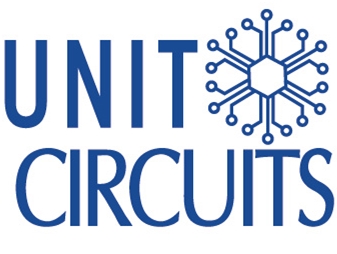Quick Leads
How Does the E-Test Fixture Differ from Flying Probe Testing?
Selecting the Right PCB Testing Method for Quality and Cost Efficiency
Did you know that picking the right way to test your PCBs can save you up to 30% on making them? You have to pick the right way to test your PCBs, whether it’s an E-test fixture or flying probe testing, so you can make sure you’re making good PCBs without spending too much money. This guide tells you about both ways to test your PCBs so you can make the right decision based on how many you’re making, how much you want to change, and how much money you have.
Need guidance on choosing a cost-effective PCB testing method for your project? Contact us for a personalized consultation!
What is an E-Test Fixture for High-Volume PCB Testing?
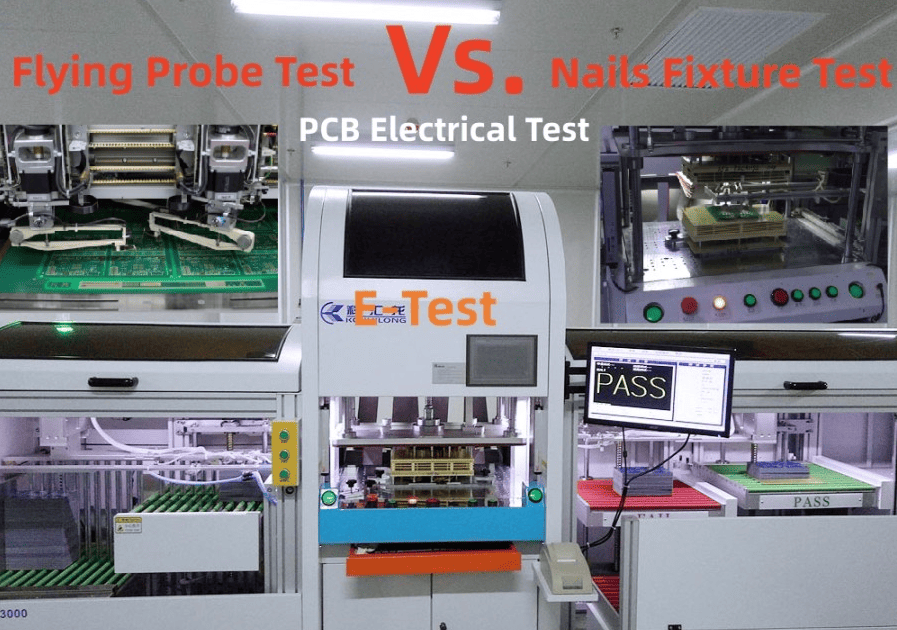
An E-test fixture, also called a bed-of-nails tester, is a fast way to test PCBs that a lot of people use when they’re making a lot of PCBs. This setup uses special pins that touch the test points on the PCB at the same time, so you can test a lot of stuff at once.
Advantages:
- High throughput: It’s fast and good for making a lot of PCBs.
- Consistent accuracy: Ensures reliable testing for densely populated boards.
- Scalability: Once set up, the fixture can test thousands of units quickly and efficiently.
Limitations:
- Higher initial cost: It costs a lot to set up the fixture, especially if you have a complicated design.
- Limited flexibility: It’s hard to change the fixture, so it’s not good for changing your design.
Use Cases:
Often used in automotive high-volume production, where manufacturers require rapid, repeatable testing to maintain quality standards across large quantities of standardized PCBs.

What is Flying Probe Testing for Prototyping and Low-Volume PCB Production?
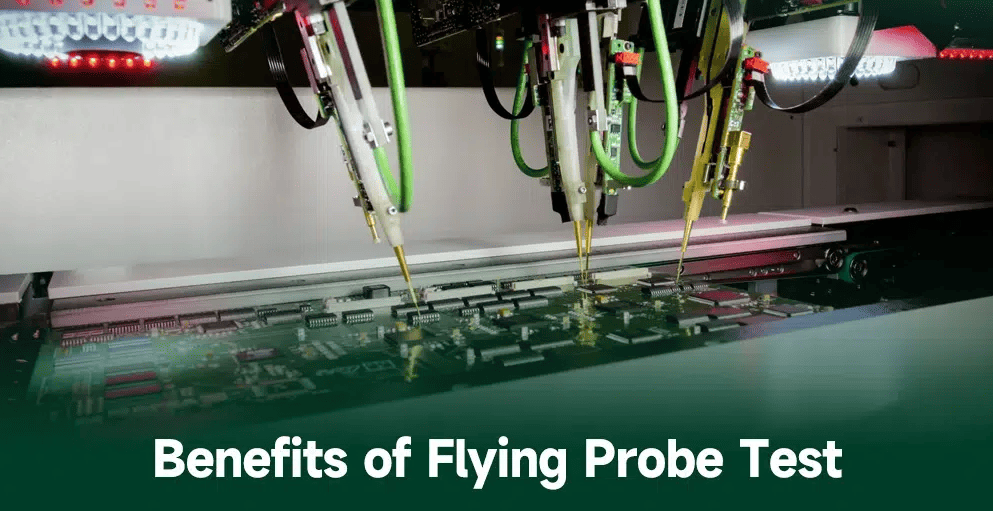
Flying probe testing is a cheap and flexible way to test PCBs that’s good for making a few or just one. This way uses probes that move around to the test points on the board, so you don’t need a special fixture.
Advantages:
- Lower initial cost: No fixture needed, reducing upfront expenses, ideal for low-cost PCB testing.
- High adaptability: Accommodates design changes easily without the need for fixture reconfiguration.
- Ideal for complex designs: Suitable for intricate circuits that require flexible, fixture-free testing.
Limitations:
- Slower testing speed: Sequential (point-by-point) testing takes longer than parallel testing.
- Moderate accuracy for high-density boards: Moving probes may struggle with very small test pads, affecting accuracy.
Use Cases:
Preferred in medical device prototyping and low-volume electronics where flexibility and cost control are crucial, and testing speed is less important.
Comparison Table: E-Test Fixture vs. Flying Probe Testing
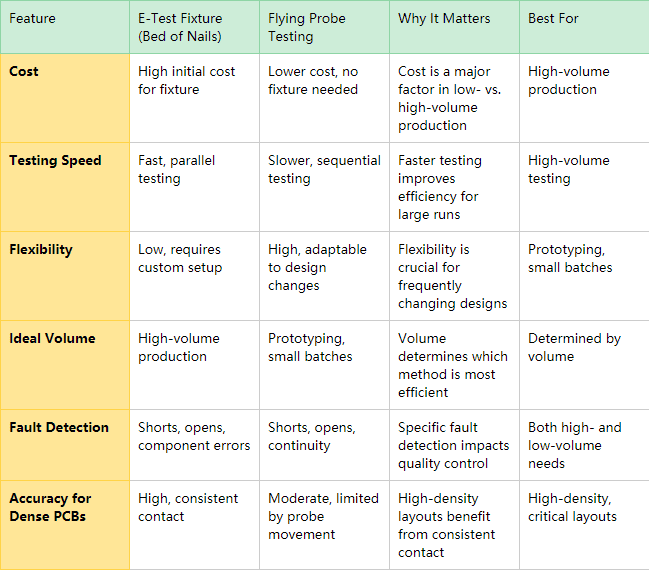
Types of Faults Detected in PCB Testing
Each way to test your PCBs is good for finding different problems and making sure your PCBs are good.
- E-Test Fixture: People use this a lot to check if stuff is connected, if there are shorts, and if the parts are in the right place. You can test a lot of stuff at the same time because the pins touch a lot of points at once, which is good for PCBs with a lot of stuff on them.
- Flying Probe Testing: This way of testing can check if stuff is connected and how much resistance there is by moving probes one at a time to the test points. This way is good for testing prototype circuits when you need to change your design a lot.
Cost and ROI Considerations for PCB Testing Methods
You can figure out the best way to test your PCBs by thinking about how much it costs to set up and how much money you’ll make in the long run.
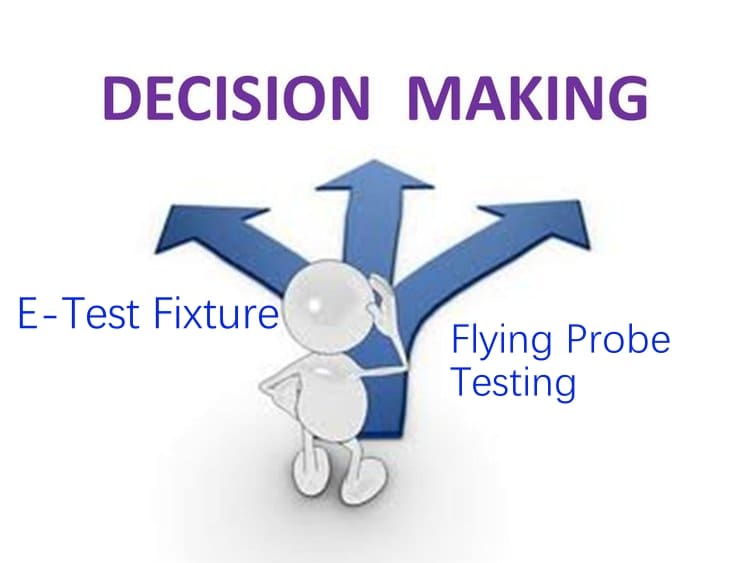
- E-Test Fixture: Even though it costs a lot to set up, this way of testing is a good deal when you’re making a lot of PCBs. For example, if it costs $5,000 to set up the fixture, it might be a good deal if you’re making more than 10,000 PCBs because it saves you time and money on people.
- Flying Probe Testing: This way of testing doesn’t cost a lot to set up, and you can change it, so it’s good for making a few or just one. This way doesn’t cost a lot to change, so it’s good for when you’re just starting out.
Tip: If you’re changing your design a lot, you might want to use flying probe testing so you don’t have to spend a lot of money changing the fixture. If you’re making a lot of the same thing, you might want to use an E-test fixture because it’s faster, you can make a lot of stuff at once, and it’s cheaper in the long run.
Decision-Making Guide: Which PCB Testing Method is Right for You?
Picking the best way to test your PCBs depends on how many you’re making. Here are some tips to help you decide:
- High-Volume, Stable Designs: Use an E-test fixture for rapid, scalable testing.
- Prototyping and Low-Volume Production: Choose flying probe testing to save on setup costs and gain flexibility.
- Frequent Design Changes: Opt for flying probe testing to avoid reconfiguration costs associated with custom fixtures.
- Complex, High-Density Boards: E-test fixtures offer the accuracy needed for precise contact on densely packed layouts.
Practical Use Cases for E-Test Fixtures and Flying Probe Testing
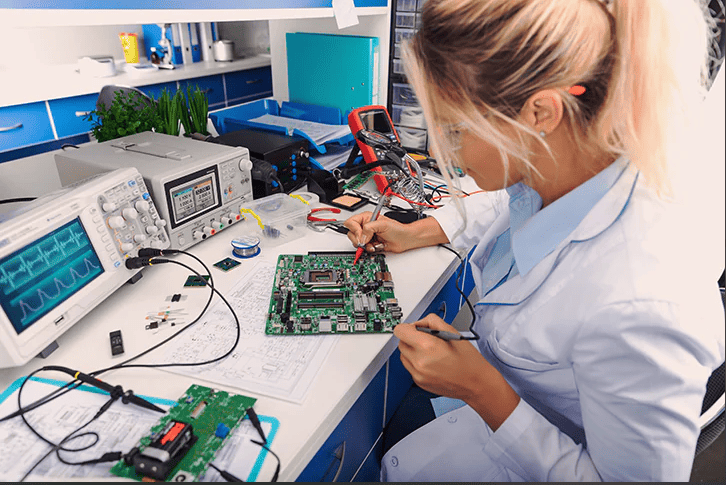
- 1.Automotive High-Volume Production: For example, a big car company that makes PCBs for the stuff that keeps you safe in your car might use E-test fixtures to make sure that every PCB is good enough to keep you safe, so they don’t have to stop making stuff.
- 2.Medical Device Prototyping: A medical company that’s making a thing you wear to check your heart might use flying probe testing to test stuff fast and change it a lot to make sure it’s right when they’re making a few of them.
- 3.Consumer Electronics with Rapid Design Changes: Companies that make stuff like phones and tablets might use flying probe testing to test stuff when they’re making a few of them and changing it a lot without spending a lot of money to set up the fixture.
Summary: Choosing the Best PCB Testing Method for Your Needs
Selecting the right PCB testing method—E-test fixtures for high-speed, large-scale production or flying probes for flexible, cost-effective prototyping—can save you a lot of money, make you faster, and help you make sure your PCBs are good.
Limited Time Offer:
Get $100 off your order TODAY!
Claim your $100 discount now – this offer won’t last long! Today ONLY!
Don’t miss this chance to save on your next project.
[Hurry! Only 50 discounts remaining!]
 Trusted by 100+ businesses worldwide
Trusted by 100+ businesses worldwide No hidden fees – transparent pricing
No hidden fees – transparent pricing Guaranteed quality with on-time deliver
Guaranteed quality with on-time deliverFor more information, visit below:
For more insights on Complete Guide on PCB Assembly E-Test Fixture, check out: Test fixture
Request for Quote
Assemble 20 PCBAS for $0
RECENT POSTS
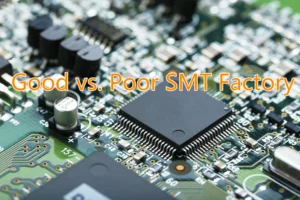
Top 10 SMT Factory Audit Checks to Ensure Reliable PCB Assembly Quality in China
Discover 10 essential SMT factory audit checks to ensure PCB assembly quality in China—boost reliability, reduce defects, and choose the right supplier.

Top 12 PCBA Manufacturers with Turnkey & Global Logistics Services [2025]
Looking for a reliable turnkey PCBA manufacturer in 2025? Discover 12 top providers with global logistics, low-volume support, and end-to-end services to streamline your electronics production.
RELATED POSTS
Leading PCBA Manufacturer
✅ Assemble 20 PCBAS for $0 ✅ Get $100 OFF – Risk-Free Trial!
✅ 100+ Satisfied Customers
✅ Ensured Quality & On-Time Delivery
✅ Free Trial, No Commitments!
